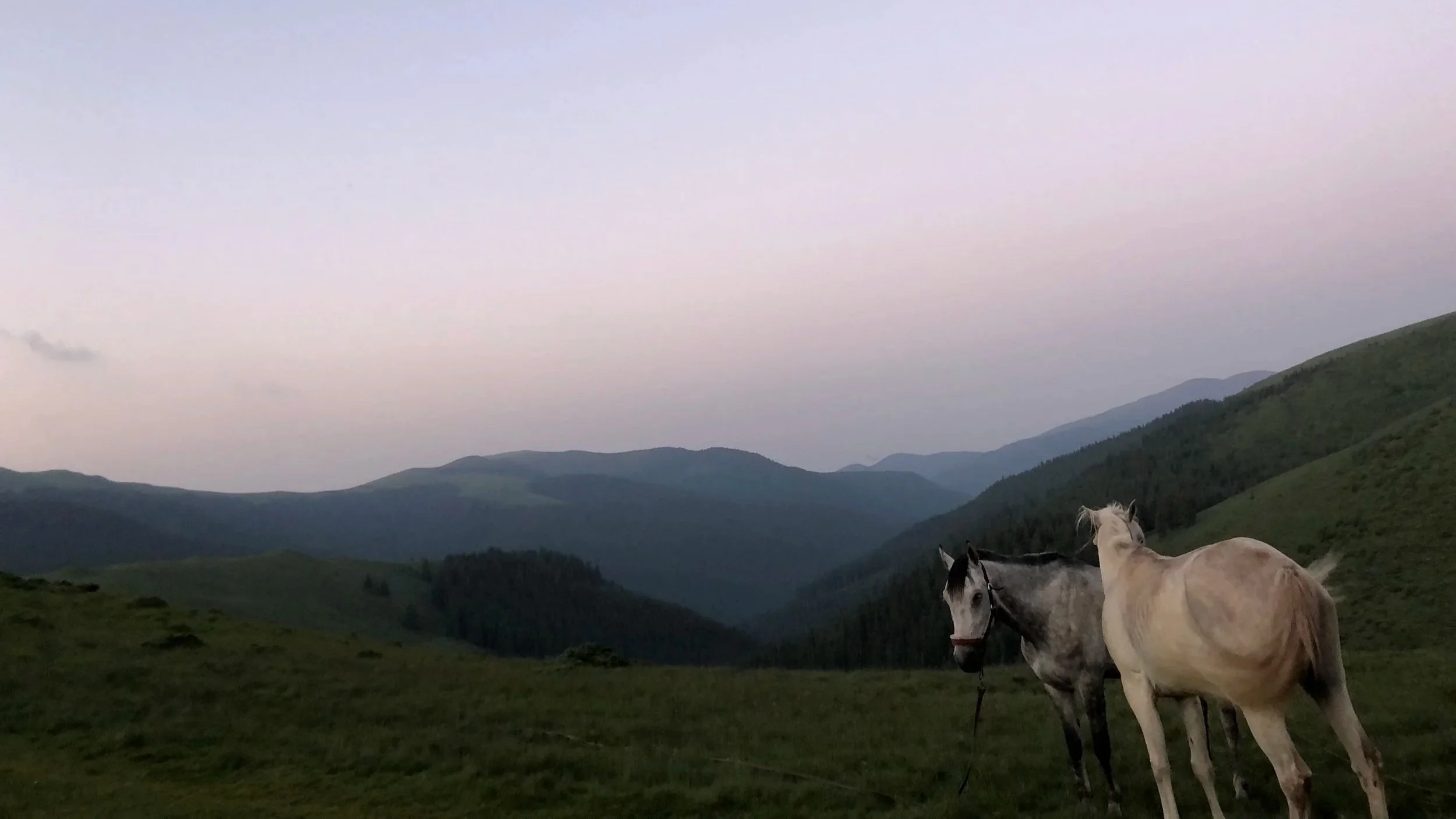Tethering Horses on the Road – Why We Chose the Tether for Long Riding
There are many different ways to secure a horse while traveling.
Both Pete and I had our first experience with long riding in Mongolia, where it’s very common to tether and hobble a horse. During our travels through Central Asia, that remained the most common way to secure a horse overnight.
When we entered Europe, things changed. Horses there rarely roam free — they live behind fences — and the most common way to secure them on the trail is with an electric fence unit. In some places, riders also use a high line.
Let’s quickly define these different approaches:
Tether – The horse is secured with a rope tied to a halter, neck, or leg, then fixed to a spike in the ground.
Hobbles – The horse’s legs are tied together to restrict movement (front legs, or sometimes front legs plus one back leg).
High line – The horse is tied to a rope stretched between two sturdy objects, like trees.
Fence unit – A lightweight electric fence is set up to secure the horse in one area (often a single line with portable fence posts).
Why We Chose the Tether
To be honest, in the beginning we didn’t really think about it. The horses we bought were already trained to tether, so we continued using that method — sometimes with hobbles. As we moved west and wild horses became rarer, we found we didn’t need hobbles anymore.
We loved how small, light, and easy the tether was. While I like the idea of a horse roaming freely with its companion inside a fenced area, there are a few reasons we prefer the tether over a fence:
Weight & Pack Size – The tether is tiny and lightweight compared to fence equipment.
Security – Each horse is tied individually, so if one gets loose, the other stays put.
Speed – It’s set up and taken down in minutes, unlike a fence that has to be built before the horses are free.
Freedom of Route – Unlike a high line, you’re not dependent on trees or tall anchor points.
When we reached Europe, we started making our own tethers from stronger, lighter materials. And believe it or not, there’s a lot of calculation behind getting a tether just right.
What makes the perfekt tether
Firstly, let’s cover the considerations for tether length. These include:
How easily the horse can graze without tangling itself.
How easily the horse can untangle itself if it does get caught.
The leverage a horse can create during a panic — both on itself and on the tether.
And most importantly, how effectively the horse can graze during its time on the tether.
Tangling
This is actually a tricky topic, because how and why a horse gets hung up in its tether depends on countless factors — the terrain, vegetation, the horse’s temperament, even the weather.
Short tethers make it harder for a horse to free itself, especially if it rolls. They also tend to frustrate a hungry horse, which can lead it to move restlessly or behave in ways that are more likely to result in tangled legs.
Long tethers can be far easier for a horse to manage in open ground and in areas with long, coarse grasses. But they can be completely unsuitable in tighter spots — such as a corner of a farmer’s field, or anywhere with a few trees — where the risk of snagging is high.
My advice? Use a tether you can easily shorten or lengthen depending on the terrain and situation. Personally, I find the sweet spot is between 8 and 13 meters, with 11 meters being absolutely perfect. At that length, the horse can usually free itself from minor tangles while avoiding our next big issue: leverage.
Leverage and Safety
A horse can move incredibly fast in the space of 22 meters — which is the distance across a full circle created by an 11-meter tether. It is ESSENTIAL that the tether is not too long, otherwise the horse can generate dangerous speed before reaching the end.
A 500 kg horse running at nearly 60 km/h can generate a force of approximately 8,000 kg when it hits the end of the tether. That’s more than enough to snap a neck, break a leg, or — more commonly — tear muscles and ligaments. The longer the tether, the greater the risk of serious injury in a panic situation.
This is why I carefully choose the tether spike length and the material of the tether. I use a 1 cm thick stainless steel spike, no more than 40 cm long, which will pull free if a horse really wants it out of the ground. This “failsafe” dramatically reduces the chance of injury. Likewise, the tether rope should break at around 250 kg of force. Ours are designed to break at 280 kg — strong enough for daily use, but weak enough to snap before harming the horse.
Grazing Considerations
For me, grazing is actually the biggest factor in choosing tether length. An 11-meter tether gives a horse a grazing circle of roughly 380 square meters. Even when grass is scarce, that’s a decent amount of area.
A horse needs about 7–8 kg of grass per day, which means it only has to eat 20 grams from each square meter. That’s hardly anything per patch, which gives the horse ample opportunity to get the nutrition it needs while living life on the road.
Final Thoughts
For us, the tether is still the most practical, lightweight, and safe method for securing horses while long riding. It’s easy to carry, quick to set up, and gives the horses enough freedom to graze happily without compromising their safety.


